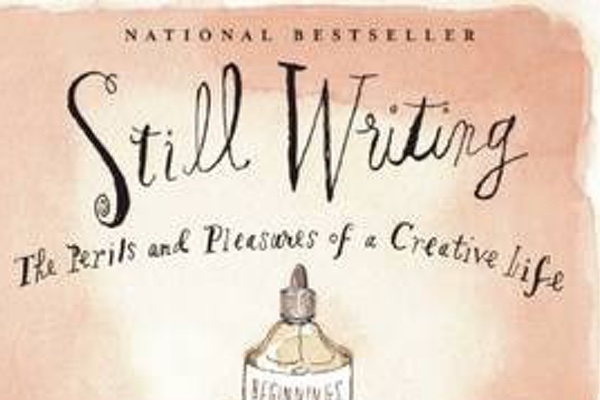Still Writing Dani Shapiro
The title of this book, The Pleasures and Perils of a Creative Life, explains, elegantly, exactly what it is. (More on that in a second.)
Dani Shapiro (b. 1962) is a best-selling memoirist who writes about her own life in a non-ironic, non-sentimental way. She is honest and authentic and generously reflects on the most interesting and personal subjects of a creative life: the living, the creating, and the existing. Not the producing or the having had produced.
Offering lessons learned over twenty years of teaching and writing, Shapiro brings her own revealing insights to weave an indispensable almanac for modern writers. Like Anne Lamott’s Bird by Bird, Virginia Woolf’s A Writer’s Diary, and Stephen King’s On Writing, Dani Shapiro’s Still Writing is a lodestar for aspiring scribes and an eloquent memoir of the writing life. How often is a writer told she’s doing something useful? So I wrote Still Writing — never once looking back at what was on this blog. A blog is a blog, and a book is a book. They are different species, and require very different processes. For instance, when I’m finished writing here today, I.
I have written seven books, and still I have to remind myself this is what I do, this is my vocation, this is what puts food on the table and pays the mortgage. It’s not a hobby or something I spend my days doing for the sheer joy of it.
Her collection of thoughts—a collection in which consciousness lives and thrives—she reexamines things that we commonly use and need to repurpose; like poet David Whyte’s Consolations, Shapiro grabs and reimagines words like permission, seeds, distance, and guides.1
On ambition, Shapiro writes not from the lofty mindset of an established author but from the self-doubting position of a beginner. It is refreshing:
Still Writing Dani Shapiro Review
There is nothing wrong with ambition. We all want to win Guggenheims and live and write in the south of France, or some version thereof—don’t we? But this can’t be the goal.
Of the numerous things Shapiro shares, my particular favorites are the strength and danger of our inner censor, a need for mentors, collected precious things we keep nearby, the mutual benefits of rest and play, and the difference between rhythm and discipline.
I certainly keep this book close and open it often. My thinking has been much-inspired by Shapiro’s wisdom and thoughtful organization.
Though we are alone in our rooms, alone with our demons, our inner censor, our teachers remind us that we’re not alone in the endeavor. We are part of a great tapestry of those who have preceded us.
Ah, the beauteous human continuum; Shapiro calls it a “tapestry.” Marilynne Robinson calls it “imagined connections.” Our connection to others and to something larger than all of us echoes in Walt Whitman’s poetry, Marcus Aurelius’ philosophy, and certainly George Saunders’ contemplation of human legacy.
Dani Shapiro Family
Inspired by Shapiro, I’d like to define a word on my own: elegance. Elegance is completeness plus modesty. Nothing present is unnecessary, and nothing necessary is absent. It’s the economy and deliberateness of Thoreau mixed with the enthusiastic generosity of Anna Deavere Smith’s warm, embracing advice to artists of all sorts.
Shapiro reminds us to write from emotion but not to succumb to it. “Grief, joy, hilarity, rage—all of it becomes the medium in which you work. You can’t be feeling it and shaping it at the same time.” 2
I think my favorite section of a very thoughtfully-written book is this (one that pierces our concept of knowledge and “having had arrived.”

I always think I should know more. That I need more information. That I should outline, perhaps. Or do some research. But really, I need to remind myself that this not-knowing is at the heart of the creative endeavor. Paradoxically, the not-knowing is often what creates the energy, portent, and momentum in the piece of work itself. One of the truest pleasures for the writer alone in a room is when our characters surprise us by doing something unexpected. And so, as we are beginning, the most liberating thing we can do for ourselves is to exist in this state of heightened interest.
To extend a few of the themes from The Perils and Pleasures of a Creative Life even further—most are worth a deep inhale—grab psychologist Rollo May’s critical read on the effects of fear on creativity, physicist Alan Lightman’s In Praise of Wasting Timeon the benefits of rest and play, Dorothea Brande’s wonderful guide to teaching writerly genius, and most of all, Bird by Bird by the inimitable writing teacher Anne Lamott born the same day as Shapiro.
